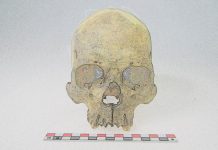
In a groundbreaking study, researchers have cracked a long-standing puzzle about the origins of silver coins that transformed the European economy during the early Middle Ages.
For years, historians wondered where the silver for the surge of coins minted between 660 and 750 AD came from.
This period saw a shift from gold to silver currency, especially in Anglo-Saxon England where the use of silver coins dramatically increased.
A team from the Universities of Cambridge, Oxford, and Vrije Universiteit Amsterdam conducted detailed chemical tests on coins kept at the Fitzwilliam Museum in Cambridge.
Their findings, published in the journal Antiquity, reveal that the initial source of this silver was the Byzantine Empire, an ancient civilization centered around the eastern Mediterranean.
The tests showed that the silver used in coins during the early period had a specific chemical makeup identical to Byzantine silver, used as early as the 3rd century.
This silver, notable for its high gold content and unique isotopic signatures, was different from any known European sources.
The study showed that this Byzantine silver had been circulating in Western Europe long before it was used for minting coins, likely held by elites as valuable stock.
Professor Rory Naismith of Cambridge, one of the study’s authors, expressed excitement over confirming a theory he had proposed a decade ago.
This finding sheds light on the extensive trade and political networks of the time, suggesting that Anglo-Saxon England and Francia (modern-day France and Germany) were significantly influenced by international trade with the Byzantine Empire.
The researchers also discovered that this scenario changed around 750 AD. A new source of silver from the Melle mine in western France began to dominate. This shift coincided with Charlemagne’s rise to power and his efforts to control the silver supply and minting processes across his empire. The use of Melle silver, which contained much lower levels of gold, spread widely, marking a major economic and political shift.
This transition highlights how Charlemagne used the control of silver mining and coin production to strengthen his rule and expand his influence throughout Western Europe.
The study also discusses the complex relationship between Charlemagne and King Offa of Mercia in England, underscoring the intertwined nature of trade and politics during this era.
In addition to solving the mystery of the silver’s origins, the research provides new insights into the early medieval economy, the role of precious metals in society, and the profound impacts of these dynamics on the development of Europe.
The findings not only redefine our understanding of the period’s economic history but also illustrate the significant influence of precious metal resources in shaping international relations and political power in the past.
Source: University of Cambridge.



